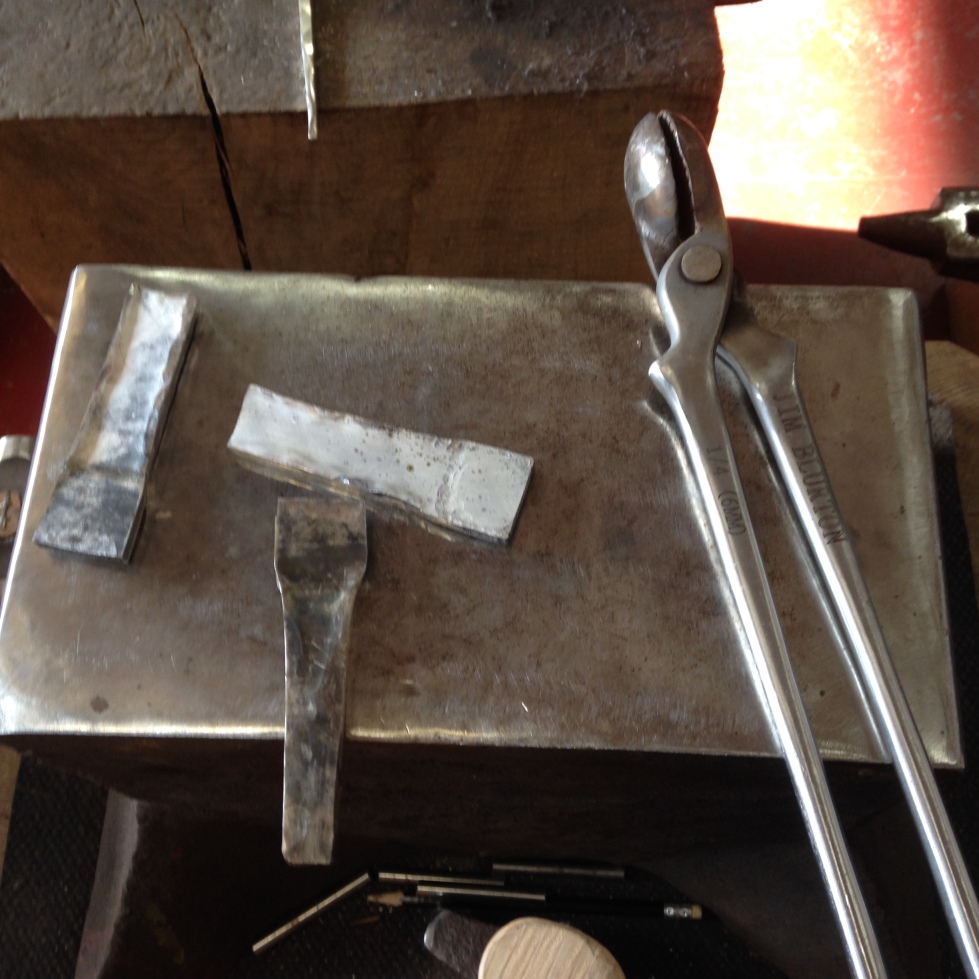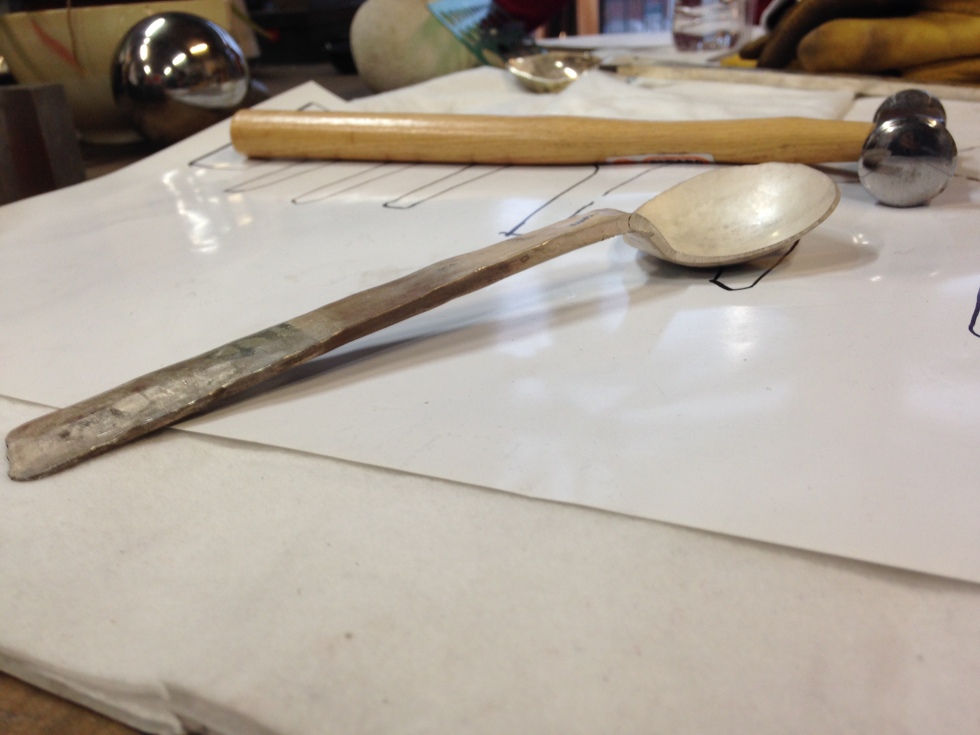Not many people know that this is what happens when you heat silver:
After a busy September exhibiting in Edinburgh, London, Salisbury and Sevenoaks, we were overdue some workshop time this October! We were very pleased to welcome to the workshop Loucinda Nims, winner of the Contemporary British Silversmiths’ ‘Design in Silver’ award, for a masterclass in silver hot-forging.
We set ourselves the task of fabricating a simple soup spoon, starting with a silver bar that measured 80mm in length, 20mm in width and 6mm in thickness.

For anyone who has not forged silver hot before there are a number of things to get used to; the weight of hammer that is best suited to your build and level of strength, the correct way to stand, the different sounds that the metal makes as it cools.
Of course, hammer technique is only a single part of a much broader process. Before any hammering can be done, decisions have to be made about the depth and shape of the bowl, the angle and thickness of the handle and the way the spoon will feel in the hand when used. Luckily, the workshop boasts an extensive spoon collection to inform these tricky choices!

Anyone who saw our blog post ‘Ode to the Spoon‘ in August will remember the photo ‘Evolution of the Spoon’. Continuing in this spirit, the progress of each soup spoon was charted as the handle was lengthened and the bowl ‘spread’ on the anvil. It was an intensive, noisy, muscle-wrenching day but, as the images show, by the end of it something spoon-like was emerging from the solid bar we had started the morning with.

After two days of forging, it was time to move on to the finer stages of the process; adding the ‘crank’ to the neck of the spoon using a jig, ‘sinking’ the bowl with a wooden mallet and perfecting the surface and lines of the spoon by filing. This was the stage at which the design of the spoons really started to diverge.
Once the spoons are in ‘good shape’, finishing processes such as buffing help to clean up the surface of the metal and eliminate blemishes such as fire-stain, ready for polishing.
Before sending it off for hallmarking and fine polishing, the only way to test whether the spoon passes muster as a useful, pleasurable utensil is to take it home and test it – Heinz Original Tomato is our top choice for the ‘soup test’!
If you’re interested in knowing more about the forging process, click here for our short film on spoon making or come and see us at our next show in Winchester from 6th-8th November.




